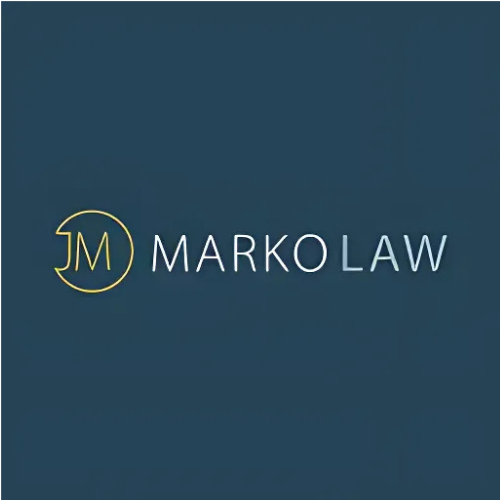Social Media and Sexual Harassment: What You Should Know
Social media has become an integral part of our daily lives, offering platforms for communication, networking, and sharing information on a global scale. With billions of users worldwide, social media platforms provide unprecedented opportunities for connecting with others and expressing ourselves. However, alongside the benefits of social media come challenges, including the intersection between social media and sexual harassment.
The prevalence of social media cannot be overstated. Platforms such as Facebook, Twitter, Instagram, Snapchat, and TikTok have billions of active users collectively, spanning diverse demographics and geographic locations. These platforms offer instantaneous communication, enabling users to connect with friends, family, colleagues, and strangers in real-time. The accessibility and reach of social media have transformed the way we communicate, share information, and engage with the world around us.
Unfortunately, the rise of social media has also brought to light the prevalence of sexual harassment in digital spaces. Sexual harassment, which encompasses a range of unwanted sexual behaviors and advances, can manifest in various forms on social media platforms. From unsolicited explicit messages and comments to online stalking and monitoring, individuals, particularly women and marginalized groups, are often subjected to harassment and abuse while navigating digital spaces.
Understanding Social Media Sexual Harassment
Definition and Examples of Sexual Harassment on Social Media Platforms
1. Unsolicited Explicit Messages and Comments: Individuals may receive unwanted messages, comments, or images of a sexual nature, often from strangers or acquaintances, without their consent. These messages can range from suggestive remarks to graphic sexual content.
2. Online Stalking and Monitoring: Perpetrators may engage in online stalking or monitoring of an individual's social media profiles, activities, and interactions without their consent. This intrusive behavior can include tracking an individual's movements, liking or commenting on their posts excessively, or attempting to gain access to their personal information.
3. Non-Consensual Sharing of Intimate Images (Revenge Porn): In some cases, individuals may share intimate or explicit images or videos of someone else without their consent, often as a form of revenge or retaliation. This non-consensual sharing of intimate images, also known as revenge porn, can have devastating consequences for victims, including humiliation, blackmail, and harassment.
4. Coercive Behavior and Grooming Tactics: Perpetrators may use social media platforms to engage in coercive behavior or grooming tactics, such as manipulating, pressuring, or coercing individuals into engaging in sexual activities or relationships against their will. These tactics can exploit power imbalances and vulnerabilities, particularly in cases involving minors or individuals in positions of authority.
Impact of Social Media on the Prevalence and Visibility of Sexual Harassment
1. Anonymity and Perceived Distance: The anonymity afforded by social media platforms can embolden perpetrators to engage in harassing behavior without fear of immediate consequences. Moreover, the perceived distance of online interactions may lead individuals to feel less accountable for their actions, potentially escalating the frequency and severity of harassment.
2. Ease of Communication and Sharing: Social media platforms facilitate instantaneous communication and sharing of content, allowing individuals to reach large audiences quickly and effortlessly. This ease of communication can facilitate the rapid spread of harassing messages, comments, and images, amplifying their impact on victims.
3. 24/7 Accessibility: Social media platforms are accessible 24/7, making it difficult for individuals to escape or avoid harassment, even in their own homes. This constant accessibility can exacerbate feelings of vulnerability and distress among victims, who may feel constantly surveilled or targeted.
4. Normalization of Harassment: In some online communities, sexual harassment may be normalized or even celebrated, perpetuating a culture of abuse and toxicity. This normalization can make it challenging for victims to recognize and address harassment, as they may fear backlash or retaliation from their peers.
Impact of Social Media Sexual Harassment
1. Emotional Distress: Victims of social media sexual harassment often experience intense emotional distress, including feelings of fear, anxiety, shame, and humiliation. The constant barrage of harassing messages, comments, or images can erode their sense of self-worth and security.
2. Depression and Anxiety: Persistent exposure to online harassment can contribute to the development or exacerbation of depression and anxiety disorders among victims. The relentless nature of online abuse can lead to feelings of hopelessness, helplessness, and isolation.
3. Post-Traumatic Stress: For some victims, the trauma of online harassment can result in symptoms of post-traumatic stress disorder (PTSD), such as flashbacks, nightmares, and hypervigilance. The ongoing threat of harassment may trigger emotional and physiological responses associated with trauma.
Social and Interpersonal Consequences
1. Damage to Relationships: Social media sexual harassment can strain relationships with friends, family, and romantic partners, as victims may struggle to disclose their experiences or seek support. The stigma and shame associated with online harassment may lead victims to withdraw from social interactions or isolate themselves from others.
2. Professional Repercussions: Victims of online harassment may experience professional repercussions, such as damage to their reputation, loss of employment opportunities, or negative impact on their career advancement. Perpetrators may attempt to discredit or undermine their victims in professional or academic settings.
3. Impaired Daily Functioning: The psychological toll of social media sexual harassment can impair victims' ability to engage in daily activities, concentrate on tasks, or maintain their overall well-being. Victims may experience disruptions in sleep, appetite, and mood, affecting their quality of life and productivity.
Legal and Practical Challenges in Addressing Online Sexual Harassment
1. Jurisdictional Issues: Online harassment often transcends geographical boundaries, posing challenges in terms of jurisdiction and legal enforcement. Determining the appropriate legal framework and jurisdiction for addressing harassment can be complex, particularly in cases involving perpetrators from different countries or regions.
2. Evidence Collection: Collecting evidence of online harassment, such as screenshots, messages, or digital communications, may be challenging due to the transient nature of social media platforms and the potential for perpetrators to delete or manipulate evidence. Victims may struggle to preserve evidence of harassment for legal proceedings.
3. Limited Legal Protections: Legal protections for victims of online harassment may vary depending on jurisdiction and the specific circumstances of the harassment. Some regions may lack comprehensive laws or regulations addressing online sexual harassment, leaving victims with limited recourse for seeking justice or protection.
Strategies for Preventing and Addressing Social Media Sexual Harassment
Setting Privacy Controls and Security Measures
1. Review Privacy Settings: Regularly review and adjust privacy settings on social media platforms to control who can view your profile, send you messages, and interact with your content. Limiting access to your personal information can help reduce the risk of harassment.
2. Use Two-Factor Authentication: Enable two-factor authentication on your social media accounts to add an extra layer of security and protect against unauthorized access. This can help prevent perpetrators from gaining control of your accounts and engaging in harassment.
3. Be Mindful of Sharing Personal Information: Exercise caution when sharing personal information, such as your location, contact details, or schedule, on social media. Avoid sharing sensitive information publicly, and consider who you trust with access to your private information.
Reporting and Blocking Harassers
1. Report Harassment: If you experience harassment on social media, report the behavior to the platform's administrators or moderators. Most social media platforms have reporting mechanisms in place for dealing with harassment, and taking action can help prevent further abuse.
2. Block or Mute Offenders: Utilize the blocking or muting features available on social media platforms to prevent harassers from contacting you or interacting with your content. Blocking offenders can help create a barrier between you and the perpetrator, reducing their ability to harass you.
3. Document Evidence: Keep a record of any harassing messages, comments, or interactions you receive on social media. Take screenshots or save copies of relevant conversations as evidence, as this documentation may be helpful if you decide to pursue further action against the perpetrator.
Advocating for Policy Changes and Platform Accountability
1. Support Policy Reforms: Advocate for policy changes and legislative reforms aimed at combating online sexual harassment and holding perpetrators accountable. Join advocacy groups, sign petitions, and participate in campaigns aimed at raising awareness and promoting change.
2. Hold Platforms Accountable: Call on social media platforms to take proactive measures to address sexual harassment and abuse on their platforms. Encourage platforms to implement stronger moderation policies, improve reporting mechanisms, and provide support resources for victims.
Seeking Support and Assistance from Trusted Allies and Resources
1. Reach Out for Support: If you experience social media sexual harassment, don't hesitate to reach out to trusted friends, family members, or colleagues for support. Talking about your experiences with someone you trust can help alleviate feelings of isolation and validate your concerns.
2. Seek Assistance from Support Organizations: Consider seeking assistance from support organizations or helplines that specialize in providing assistance to victims of online harassment. These organizations can offer guidance, resources, and emotional support to help you navigate the challenges of dealing with harassment.
3. Consult Legal Resources: If you're considering taking legal action against a perpetrator of online harassment, consult legal resources or organizations specializing in online harassment law. They can provide information about your rights, legal options, and steps you can take to seek justice.

.jpg)







.svg)








